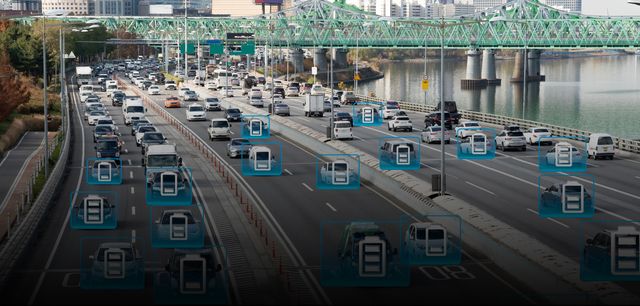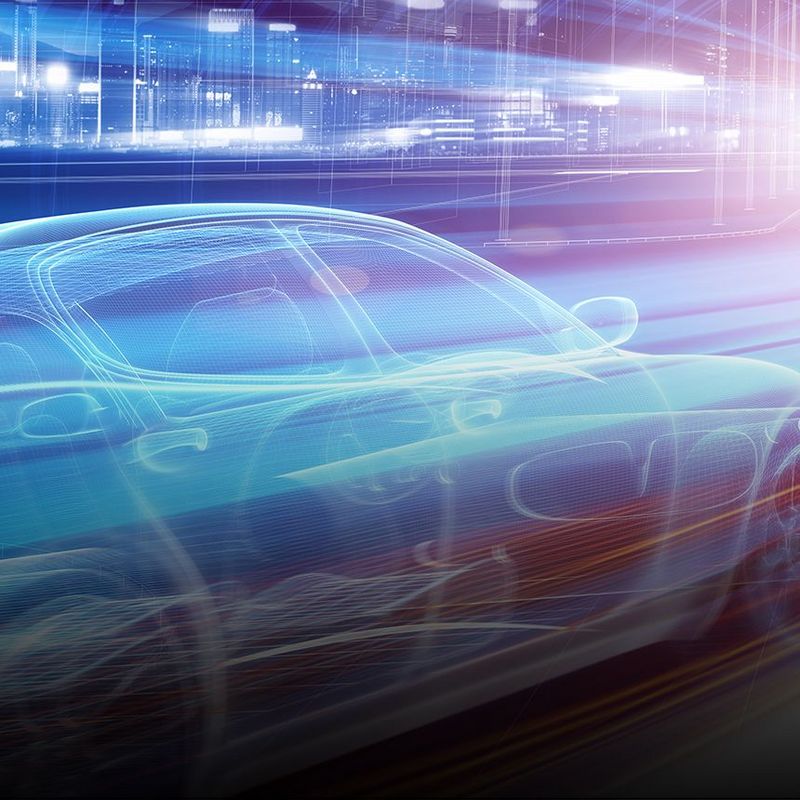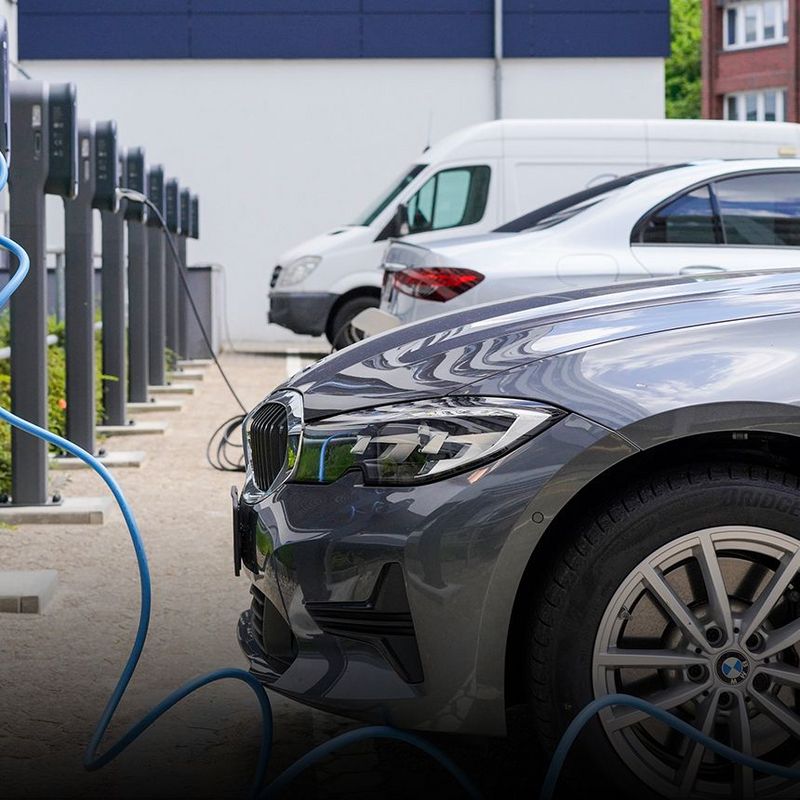04 August 2022
Words like starter, fan belt, catalytic converter or turbocharger are familiar to most of us from the world of petrol and diesel engines. The same cannot necessarily be said of the words and acronyms used in electric mobility. Read on for an overview of the key terms from electric driving.
AC/DC charging
Even if you haven’t been thunderstruck or travelled on the highway to hell, you will have heard of AC/DC. The favourite band of a former defence secretary makes use of electric guitars and also features electricity in its name: the acronym AC stands for “Alternating Current”, and DC for “Direct Current”.The former is the type of current that comes out of a power socket and flows from a wall box or AC charging station into an electric car. Once there, it is converted into direct current by a rectifier, as this is the only type of current that can be stored by a battery. Fast charging stations draw electricity from the grid and use a built-in rectifier to convert it into DC. This can then be used to charge the battery – at a significantly faster rate. Whereas AC charging stations operate at up to 22 kilowatts, fast DC chargers for cars now offer an output of up to 350 kilowatts. How much of this an individual electric car can absorb depends on the maximum charging capacity of the model in question.
Battery conditioning
Electric car batteries are a bit like us: they work best at their feel-good temperature. If the battery is too cold in winter or too hot in summer, the time taken to charge the car will increase. Various manufacturers, among them Audi, Hyundai, Mercedes and Tesla, have therefore opted for battery conditioning, also known as intelligent thermal management. If you use your satnav to plan in a stop at a fast-charging station, the battery is warmed up or cooled down in advance to allow you to charge at full capacity when you get there.
BEV
BEV is the acronym for “Battery Electric Vehicle”. This refers to fully electric cars, which, unlike plug-in hybrids or fuel cell electric vehicles (FCEV), are operated exclusively by electricity from a battery.
Bidirectional charging
Bidirectional charging means charging that goes in both directions. The battery of the electric car can, in other words, both draw current from the charging station and charge up external consumers such as electric bikes or scooters and, crucially, return electricity to the grid. The latter is considered an important component of the smart grid, the intelligent electricity supply network of the future.
© iStockFuture music or soon increasingly reality? Fuel cell vehicles run on hydrogen, which is converted into electricity.
FCEV
This acronym stands for “Fuel Cell Electric Vehicle”. These vehicles convert hydrogen into electricity, which then goes to power an electric motor – hence the E in FCEV. They also have a battery on board, but this is used mainly for buffer storage and is thus smaller than its counterpart in a fully electric car.
Capacity
In all likelihood, only very few people know the exact capacity of their petrol or diesel car’s tank. But hardly anyone buys an electric car without knowing its capacity. Capacity, or energy content, is measured in kilowatt hours (kWh). Compact electric cars now come with a battery with around 60 kilowatt hours; the battery found in mid-range models will have over 70 and big SUVs and luxury models over 100. If an electric car uses about 20 kilowatt hours over a distance of 100 kilometres and is equipped with a 75-kWh battery, it will need to be recharged after 375 kilometres at most.
Charging capacity
The charging capacity is the maximum value in kilowatts at which the electric car battery can be charged. Most current models will charge at eleven kilowatts, sometimes 22, at a wall box or AC charging station (AC/DC charging). At fast-charging stations, the spectrum ranges from 50 kW (Renault Zoe), 120 kW (VW ID.3) or 220 kW (Hyundai Ioniq 5) to 270 kW (Porsche Taycan). The charging capacity isn’t set in stone in the hardware, however. It can also be retrospectively increased by software updates of the kind that were recently released by VW for its ID models.
© iStockWhether diesel, petrol or electric – the vehicle is refueled at the pump. However, the charging process for electric cars is somewhat more complex.
Charging curve
The higher the charging capacity, the faster the battery charges up, right? That’s actually only half true. This is because the amount of energy an electric car can draw out of the charging station depends on various factors: the amount of charge in the battery to begin with, its age, its temperature or the environment. And, last but not least, the battery management system which the carmaker deploys to manage the charging process, among other things. It is the interaction of all these variables that gives rise to the charging curve, the metric representative of charging capacity and charging status. Some models are like high-performance mountaineers. In other words, they hit the summit in nothing flat before coming down again in stages. Others may not come out of the starting blocks quite so fast, but they will charge pretty constantly over a long period with an unchanged output. Whether your car likes swarming up K2 or prefers life on a plateau can be established by carrying out the relevant tests or looking on Internet fora.
One-pedal driving
It’s in the name. What would make riding a bike impossible can enhance driver comfort in an electric vehicle. When you take your foot off the accelerator pedal, your electric car comes to a stop. The reason for this is recuperation. When it comes to emergency braking, you can and should hit the brake pedal, of course.
Recuperation
Every electric motor basically functions in two directions: it can convert electric current into motion – and vice versa. When you take your foot off the accelerator pedal, the electric motor turns into a generator and converts the vehicle’s motion energy into electricity. This slows the electric car down. Whereas in an internal combustion engine the kinetic energy is mainly dissipated in the form of heat from the brakes, in the electric car it can to some extent be recovered – in other words, it is recuperated. This manifests in positive changes to the predicted range when you’re driving downhill or in urban traffic. And because the motor bears the greater part of the braking effort, the brake discs and linings don’t wear out so quickly. Less particulate matter is emitted, and fewer trips to the workshop to replace brake components are needed. This is a win-win situation for your bank balance and the urban environment.
SoC
This acronym stands for “State of Charge”. As a rule, the SoC will be rendered in percent on your dashboard or the display of your wall box or charging station. Battery cells are easiest to charge when the SoC lies between ten and 60 percent. From there, the charging capacity is gradually reduced to protect the cells. When the SoC reaches 80 percent, the charging curve heads down significantly. It is for this reason that carmakers commonly take an SoC of up to 80 percent as their reference point when stating the time required for a fast charge. As a rule, this will range from 30 to 35 minutes. With the prospect of 800-volt technology, Porsche, Hyundai, Kia and Audi are eyeing up times of less than 20 minutes.





